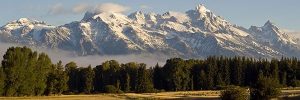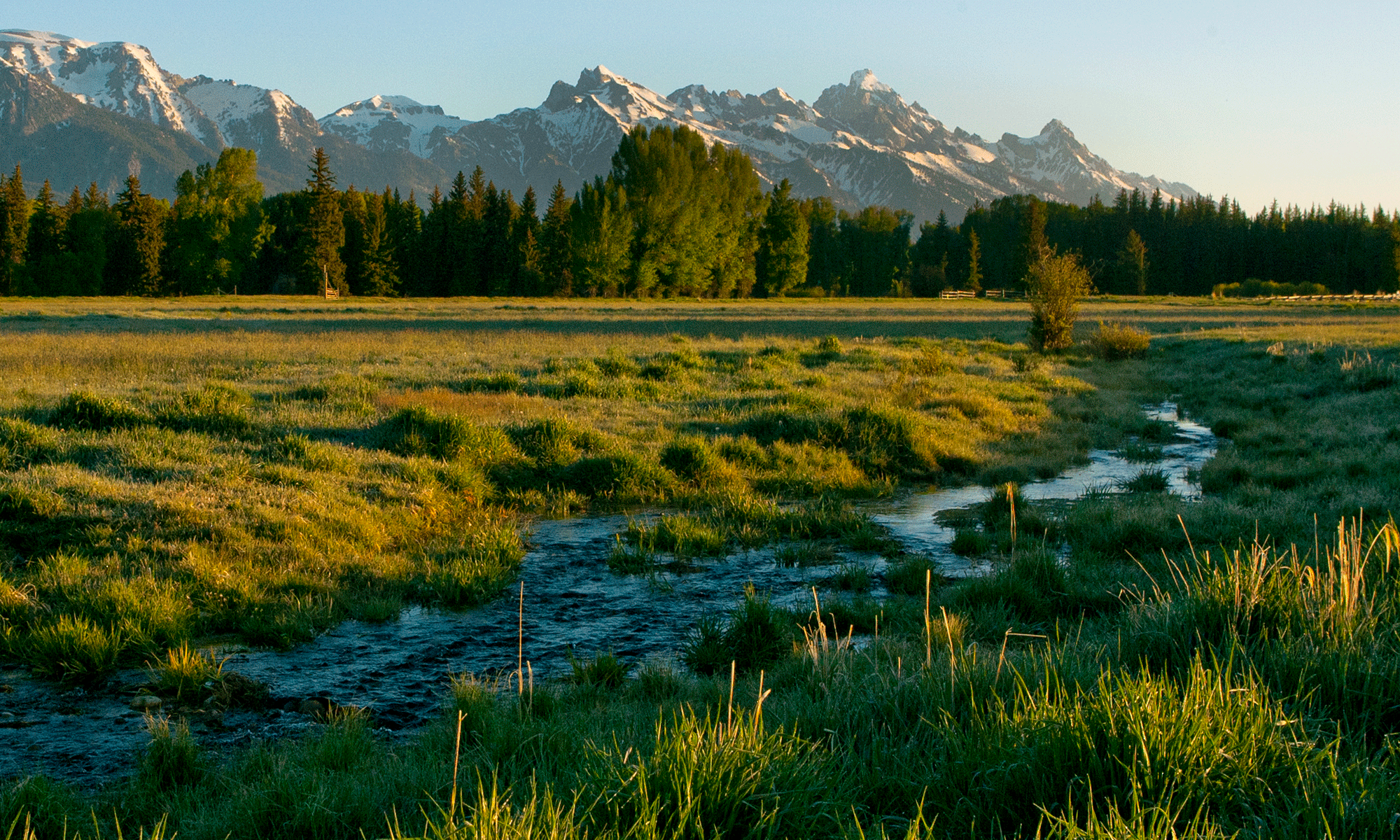
One of the most beautiful places in the world, Jackson Hole, is a valley that is fifteen miles wide and forty miles long. In the center of this valley, lies the famous Bar BC Ranch where the Snake and Gros Ventre rivers meet.
The Bar BC Ranch is accessed via Spring Gulch Road and is approximately four miles from the town of Jackson. The Spring Gulch corridor is home to some of the last original Jackson Hole working ranches. Since 2004 the Bar BC Ranch has slowly formed into one of the most sought-after residential areas in the valley.
Viewable to the west is the world-class Jackson Hole Mountain Resort, famous for its deep powder, unmatched skiing and recreational opportunities. A few miles north of the property is the small but sophisticated Jackson Hole Airport, allowing for convenient travel to and from the property. Father north yet, but only ten miles or so, is the stunning Grand Teton National Park leading into Yellowstone National Park.
Of the 2.7 million acres in Teton County, where the Bar BC Ranch is located, 97 percent are part of national forests, parkland, or other protected public lands. As one of Jackson Hole’s most well known ranches, this pristine acreage has remained unspoiled due to careful stewardship of the land.
Due to the incredible success of Bar BC Ranch real estate sales, a new offering – Bar BC East, has just been released.
Just across the country lane of Spring Gulch Road from the Bar BC Ranch is a stunning corridor of land that was part of the famous Lucas Ranch cira 1896. The 3 parcels that make up Bar BC East range from 35 to 49 acres. This is a riparian corridor with private Gros Ventre River frontage and spring-fed tributaries on 2 of the parcels. The 3rd parcel is borders Grand Teton National Park.
All have stunning Grand Teton views, a private trail extending to the confluence of the Gros Ventre and Snake Rivers, and lovely blue spruce and cottonwood trees and foliage. They are ideal for equestrian use.
These sites will forever maintain the western spirit and open spaces that characterize the Rocky Mountain West.
